Artfields installation artist: Jocelyn Châteauvert
Jocelyn Châteauvert
ArtFields Location: The Bean Market
Originally from Iowa, artist Jocelyn Châteauvert has made Charleston her home since 1999. It was during her graduate study in jewelry and metalworking at the University of Iowa that a professor urged her to take a papermaking course and Châteauvert found her true passion. Making all of her own paper by hand from plant fibers, Châteauvert creates beautiful, elemental art pieces, ranging from jewelry to large-scale, site-specific installations. Much of her work implies abstracted botanical themes. The translucent nature of the material allows light to play within and through the surfaces, folds, and creases of each form. My visit to the studio of this ardent maker and wonderful artist, this self-professed cheerleader for paper, left me wishing I could have spent the day with my hands in vats of thick, fibrous pulp! And though she can’t tell us exactly what to expect yet for her ArtFields installation, it’s bound to be magical.
AM: Where are you from originally?
JC: I’m originally from Iowa City, Iowa, but I moved to Charleston in 1999.
What can you tell us about your background and what led you to become a professional artist?
I have been working independently as an artist for almost 25 years. I just continued with what I was doing there [in Iowa City], and you know, I’ve lived in San Francisco, as well. I have an MFA in metalworking and jewelry from the University of Iowa. Where simultaneously, at the behest of another professor, I took a papermaking course. And you know, as a fresh grad student, I said OK! And well, I fell in love with it. I had the generosity and expertise of a magical person named Timothy Barrett, who was a research scientist at the university, but his expertise is in papermaking so he taught the course at the art school. He was actually awarded a MacArthur [“genius grant” fellowship] two years ago for his work in paper! This is a very interesting way to approach it – because it wasn’t the critiques, it wasn’t classical art classes, it was all about making, and learning how to make paper better; the chemical properties and the science behind it – so it was a really solid foundation. We used top grade equipment – it isn’t like making paper in a blender or using recycled materials – this is in the 500-year tradition of using these fibers…so I’m really a classical papermaker. And I also worked with a very prominent metalworker, who was my mentor and professor. So those are the two disciplines I come from.
After grad school, I taught in England for a couple of semesters at the Polytechnic there, and then I moved to San Francisco, where I really started my business. The goal was to marry metal and paper. So I created paper and sterling jewelry and I did that for a very long time. But paper, always paper. I started doing lamps, because I really wanted to put light in the pieces, and then I wanted to work bigger, so I started doing installation work. And, so, that’s kind of in a nutshell how it’s evolved. Although I still keep going back to all of those parts in what I do today – I’m not mono-focused.
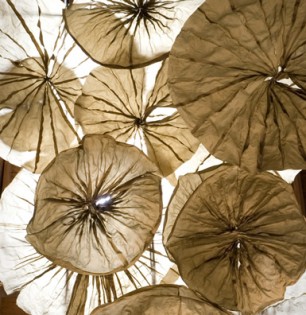 AM: What has been a seminal experience for you?
AM: What has been a seminal experience for you?
JC: What really had an impact on my work was that I was invited to do a four-person show at the Smithsonian in 2007 at the Renwick Gallery called From the Ground Up. The beautiful thing about that was they wanted new work…so I created some very large-scale work as well as some jewelry.
My work has always tended towards botanical-themed pieces. You know, it’s funny, I hadn’t actually really realized that until I was nominated to apply for the Smithsonian’s research fellowship, which is only awarded to eight-to-ten people a year, and I was the first ever in a craft-based field to have received the fellowship. Well, suddenly I looked at the larger body of my work. I could choose anywhere in the Smithsonian to study and I decided to work with the National Museum of Natural History in the botanical department. I found that I really wasn’t someone who could stay in the basement doing research all the time or on the fourth floor looking at the Mall, so I decided to get out in the field and I went to Guyana in South America, to the Amazon, to look at botanicals. The Smithsonian has been working in Guyana for over 25 years and they’ve brought back over 50,000 plant samples from the Amazon for their herbarium, which has over 6 million botanicals in its collection – it’s fantastic. Their association with Guyana gave me the entry to go down there for my own research in the rain forest – three weeks one year and three weeks the following year (I took my son the second year). I did a lot of drawing and documentation of plant life. That will always resonate with me – it was a really fabulous experience – it’s like being in the primordial place. So, botanicals and nature have become a concentration, though not consciously at first – most of my early jewelry was very clean and design-oriented – but now, I make plants from plants.
AM: Can you talk about your medium, about paper, a little bit more?
JC: Maybe one of the hardest things is that I make my own material – it’s a lot of work; very labor-intensive. All of the paper is made from plant fibers. This is not wood pulp. The two fibers I use are flax and abacá, which is derived from a kind of banana plant – it’s the stem of the leaf – also called Manila hemp, although it’s not like the hemp you might be familiar with. What’s unique about both flax and abacá is that the longer you beat the fibers, the more translucent they become and you no longer see the fiber in the paper. These are the only two papermaking fibers that will really do that, so that’s why I choose to use them; for the translucency, which is wonderful for the lamps and with light (natural or otherwise) in the installations.
My impulse, my passion, is working with this material; it’s working with the paper – it just turns me on! The pulp takes about six days to dry – I have to tend them [the pieces] mostly on a daily basis – all of this is like tending a garden – drying, rolling, rewetting. In thinking about the elemental nature of what I do, you know, when it really came down to it between metalworking and paper, I didn’t want to divest myself totally from fire, but to work with water on a daily basis – in a vat with the pulp – it’s like a day at the beach!
What do you hope people take away from your work? What are you trying to communicate?
Paper is a very humble material that most people know little about. I’m always educating people about paper. We know we have books and texts from centuries ago, but it doesn’t occur to most people why we do. And we do because the paper was made by hand with plant fibers. I’m always an educator, an advocate, and a cheerleader for handmade paper. And in my exploration, and what keeps me at it, is that I keep finding new things to do with it. Recently, I started just working with the pulp – not making sheets of paper first – so I sculpt the pulp. Now feel that [she hands over a sample and it’s strong and rigid] – you could drive nails through that – it could be a building material, but it’s purely plant fibers and water, nothing else. I want people to be able to touch the material – not to have this divide between them and the work – so I always tend to have a basket of shards and samples that people can touch near the work itself, because I want them to be engaged with this material that is so little used in art. Did you know this paper can last 500 years, it’s archival and it’s “green.” I’m just an advocate for paper! I want people to be curious; to want to know more about the material, and for them to connect to the world around them through these abstracted botanical forms.
I think what separates many people from art is often the language that surrounds it – the pedantic, erudite approach and elitism that accompanies art bothers me. I know what I’m not – I’m not a political artist for instance. The most authentic thing I can say is that it’s nature that inspires me and that I’m fascinated and passionate about this material. I always try to let the paper speak for itself…artists talk about this, but you know, I can have something determined in my mind, and then I’ll make it in the paper, and the paper always turns out more beautiful than I could have imagined. It wants to be organic forms – it wants to come back into its own somehow.
AM: What or who has inspired your work recently?
JC: Well I don’t feel like I live in a vacuum, but you get self-absorbed in your work; there’s so much I want to do. I’d say locally, there’ve been some shows – Saltworks and the Lesley Dill show downtown [at the Halsey Institute for Contemporary Art]. I’ve spent time recently in New Orleans – I go there every year – it’s so vibrant. What does inspire me always is the natural environment here – the lily pads, the grasses, those things…I didn’t see or notice those things in San Francisco, for example.
AM: What made you get involved with ArtFields in its inaugural year and can you tell us anything about the piece you’re creating?
JC: I was invited – that was a start! And because there will be so many activities and so much going on, it will be a wonderful introduction for many people to my work. So, again, it’s about an opportunity to educate. As one of the installation artists, I get to give an artists lecture. There’s also a good jury for the rest of the work this year – the curator of the Mint [the Mint Museum of Art in Charlotte, NC], and Mark of course [Mark Sloan, director and senior curator of the Halsey Institute for Contemporary Art in Charleston], among others.
I’m creating a whole new piece for the festival – it’s not an older one – although I’m not exactly sure what it will be just yet. My installation site is at the Bean Museum building, which is being refurbished – it’s a long, linear building and I have the front space. There’s brick, and glass and steel boxes in the space and good natural, ambient light. I don’t know quite what to tell you to expect yet, but I do want to have some part of it that kids, in particular, are wowed by….
AM: What would people be surprised to know about you?
JC: My stepfather collected animals for the Des Moines Blank Park Zoo…and they quarantined at our house when I was a child. This was in the 60s – you’d never get away with that now! I grew up with wild animals in my bathroom, in the living room – we had a bat that lived in a drawer, we had ocelots, A LOT of snakes (that was my stepfather’s thing), baby bears that got lost once and were found hiding under some woman’s porch, an alligator in the yard…I did not like the crow who lived in the bathroom, that may have drawn the line for me – it was huge! An otter lived in the bathtub – now that would be my reincarnation animal, definitely – their family structure, the way they have such fun! That was a really interesting period in my life.
Words: Jessica Dyer
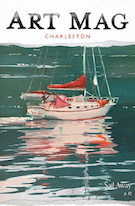
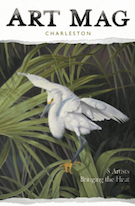
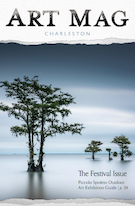

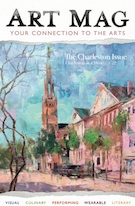
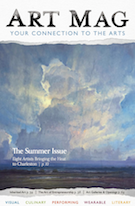
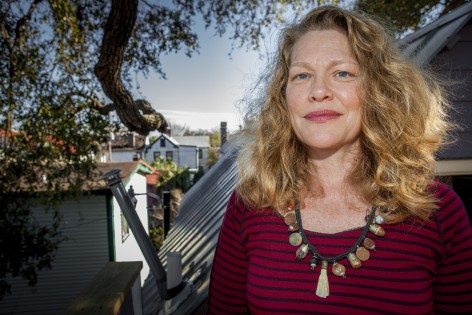





Comments (0)
No comments yet